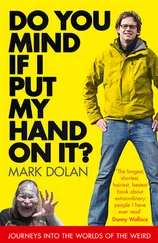Robert Monroe - Journeys out of the body, Practical Guidebook
Здесь есть возможность читать онлайн «Robert Monroe - Journeys out of the body, Practical Guidebook» весь текст электронной книги совершенно бесплатно (целиком полную версию без сокращений). В некоторых случаях можно слушать аудио, скачать через торрент в формате fb2 и присутствует краткое содержание. Жанр: Старинная литература, на английском языке. Описание произведения, (предисловие) а так же отзывы посетителей доступны на портале библиотеки ЛибКат.
- Название:Journeys out of the body, Practical Guidebook
- Автор:
- Жанр:
- Год:неизвестен
- ISBN:нет данных
- Рейтинг книги:5 / 5. Голосов: 1
-
Избранное:Добавить в избранное
- Отзывы:
-
Ваша оценка:
- 100
- 1
- 2
- 3
- 4
- 5
Journeys out of the body, Practical Guidebook: краткое содержание, описание и аннотация
Предлагаем к чтению аннотацию, описание, краткое содержание или предисловие (зависит от того, что написал сам автор книги «Journeys out of the body, Practical Guidebook»). Если вы не нашли необходимую информацию о книге — напишите в комментариях, мы постараемся отыскать её.
Journeys out of the body, Practical Guidebook — читать онлайн бесплатно полную книгу (весь текст) целиком
Ниже представлен текст книги, разбитый по страницам. Система сохранения места последней прочитанной страницы, позволяет с удобством читать онлайн бесплатно книгу «Journeys out of the body, Practical Guidebook», без необходимости каждый раз заново искать на чём Вы остановились. Поставьте закладку, и сможете в любой момент перейти на страницу, на которой закончили чтение.
Интервал:
Закладка:
In other words, if a practitioner located in the phase holds a red pencil and examines it, tactile and visual perceptions are engaged, which under sharp agitation cause the object to exist in its complete form. However, as soon as the eyes are shut, the stability of pencil image weakens. In this situation, it will be enough for the practitioner (after sufficient training) to concentrate on believing that the pencil is dark-blue in order for it to appear dark blue after opening the eyes.
This phenomenon occurs because the color of the pencil is no longer determined by perceptual areas of the brain and, therefore, it is possible to change it.
If a red pencil is placed on a table and the practitioner’s eyes are shut, and there is concentration on a thought that the pencil is no
longer on the table, then after opening the eyes, the practitioner will find that the pencil has disappeared. In essence, when the pencil is lying on the table and the practitioner’s eyes are closed, and the pencil is not being held, no perception is being invested in the pencil, which the practitioner deletes using autosuggestion.
Using certain technique-related methods, a practitioner may cause the stability of the phase state to remain in flux using techniques that best suit the practitioner’s individual personality.
TECHNIQUES FOR TRANSLOCATION
Translocation through Teleportation
This is one of the simplest and most accessible techniques that beginners should use right away. To apply it, shut the eyes (if vision is present), and then concentrate attention on a thought-form or image of a location elsewhere in the phase. At this moment, there will be a string sensation of swift flight and within two to 10 seconds, the destination will be reached.
The success of this technique depends on a strong concentration upon a single goal: the desired location. Practice must be performed very clearly, confidently, aggressively, and without distractions. Any unrelated thoughts have a profoundly negative influence on the performance of this technique. They unnecessarily prolong the flight, cause a foul, or result in arriving at an undesired location.
Translocation through a Door
In order to use this technique, approach any door with the strong belief that it leads to the required location. After opening the door, the practitioner will see and be able to step into the destination. If the door was originally open, it must be completely shut before applying the technique.
A drawback to this technique is that its practice always requires a door. If there is no door, users of this translocation technique should create one using an object finding technique.
Translocation through Teleportation with the Eyes OpenThis technique is difficult because it requires an unstable phase space caused by a strong desire to translocate to another location.
During teleportation by teleportation with eyes shut, the practitioner disengages from the current location. Whereas during teleportation by flight with eyes shut the practitioner disentangles himself from the current location, that is not the case here. Therefore, this technique should be used only by experienced practitioners who are confident that they are capable of remaining in the phase.
As far as implementing the technique is concerned, the practitioner simply needs to stop and concentrate on the thought that he is already present in the desirable location and focus on its image. It is important to not stare at or touch anything during the thought.
Surrounding space will dim, blur and then disappear during this time, and then the intended location will gradually start to appear. The rate of space metamorphosis depends on the degree of desire to reach the required location.
If concentration is weak or phase depth is poor, then after space destabilizes, it may not be restored - and a return to the wakeful state will occur.
Translocation with Closed Eyes
This is one of the easiest techniques. To use this technique, the practitioner simply needs to shut the eyes and have an intense desire that, when the eyes are next opened, the required location will be reached. In order to considerably increase the effectiveness of this technique, it would be useful to imagine, at the moment you close your eyes, that you have already reached the desired location.
Translocation must occur then, and it has to happen without the flight sensations that occur during teleportation with closed eyes.
Translocation must occur right then, and it has to happen without the flight that occurs in teleportation with closed eyes, which must be avoided.
Translocation by Concentration on a Remote ObjectTo perform this technique, the practitioner should peer from a distance at a minor detail of the desired location. The greater an intention to see an object’s detail, the quicker the arrival at the object’s location.
A drawback to this technique is that this type of translocation is possible only for places that are already visible, albeit from a great distance.
Translocation during Separation
The simplest way to translocate is to do so while separating from the body. Employing this technique is extremely simple and very convenient. It may be combined with almost any separation technique and is performed by focusing on the image and feel of a desired location during the initial stages of exiting the body. It is even better to imagine that phase entry will occur and separation will complete in a chosen location.
Interesting fact!
After having changed his place of residence, the practitioner will very often continue for some time to separate from the body in the same house where he was used to doing this previously.
A drawback of this technique is that separation occurs only in the beginning of the phase experience and, therefore, can only be used once. Other options should be considered after the first translocation.
Translocation by Passing through a Wall
This technique is performed by walking or flying through a wall with the eyes shut and a firm conviction that the required location is behind the wall. The barrier does not necessarily have to be a wall. It can be any non-transparent object through which a practitioner may walk or fly: a screen, a wardrobe, and so on.
The main drawback of this technique is the necessity of appropriate skills for penetrating through solid objects of the phase.
Another necessary condition for applying this technique is the presence of barriers to pass through.
Translocation through Diving
This technique is identical to passing through walls with the only difference being instead of a wall - which may not always be available - the practitioner will use the floor or the ground. The practitioner must dive headfirst with the eyes shut and have complete confidence that the required location is underneath the solid surface.
The ability to pass through solid objects is, naturally, also required.
A practitioner may dive through the floor or the ground, and also into any flat horizontal surface: a table, a chair, a bed, and so forth.
Translocation through Rotation
Apply this technique, a practitioner in the phase will to start rotating on an axis while simultaneously concentrating on a belief that a desired location will be reached once rotation is stopped. The eyes must be shut during the rotation, or vision must not be focused on anything in particular. As a rule, two to five revolutions on an axis are sufficient. Once again, everything depends on the ability to fully concentrate on a desired goal without any distractions.
Читать дальшеИнтервал:
Закладка:
Похожие книги на «Journeys out of the body, Practical Guidebook»
Представляем Вашему вниманию похожие книги на «Journeys out of the body, Practical Guidebook» списком для выбора. Мы отобрали схожую по названию и смыслу литературу в надежде предоставить читателям больше вариантов отыскать новые, интересные, ещё непрочитанные произведения.
Обсуждение, отзывы о книге «Journeys out of the body, Practical Guidebook» и просто собственные мнения читателей. Оставьте ваши комментарии, напишите, что Вы думаете о произведении, его смысле или главных героях. Укажите что конкретно понравилось, а что нет, и почему Вы так считаете.










